How Do You Measure Success?



■ BUYING OUT THE COMPETITION


■ REIMAGINING LEADERSHIP











® MARCH 2023 © Copyright 2023 American Trade Magazines All rights reserved.

Your




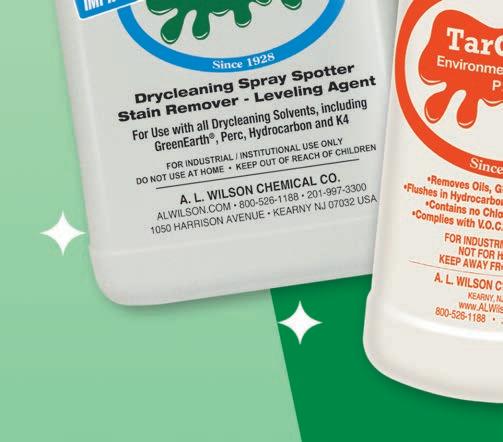
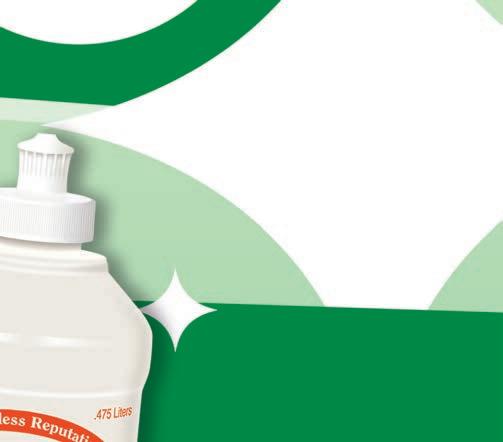



While
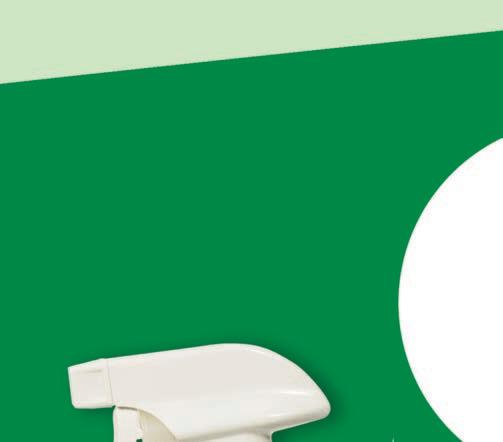
Delivering the
Garments
Customers
And these stain removers are eco-friendly... a win for you, your customers and the environment. Replace VDS with EasyGo® spray spotter. Spray it on and dryclean it out in any solvent. Replace traditional POGs with TarGo® EF. It removes the toughest oil-based stains. Use these stain removers to deliver stain-free garments while enhancing your green reputation. Become a stain wizard at ALWilson.com or call800-526-1188 A. L. WILSON CHEMICAL CO.
with Wilson’s Team! EasyGo and TarGo EF are California compliant, chlorinated-solvent and NPE free, biodegradable and non-combustible.
Stain-Free
Desire
GoGreen
6 12 20





How Do You Measure Success?
We explore how tracking key performance indicators (KPIs) can help dry cleaners see past patterns, make sense of the present and help chart a course for the future of their business.


Buying Out the Competition
One method of growing their business that many dry cleaners have found e ective is making an o er to buy out competing stores. We look at the benefits, potential problems and methods for success in going down this route.

Reimagining Leadership for Future Success
Yesterday’s management styles are often not the best way to get today’s employees to pull together to build a company. In this webinar roundup, four types of management styles are discussed, as well as why it’s important to communicate with employees the way they wish their leaders would.
HUNG UP ON THE HIDDEN HANGER?
If you need a little help finding this month’s hanger hidden on our cover, here’s a clue. Good luck!
2 American Drycleaner, March 2023 drycleaner AMERICAN AMERICAN March 2023 Vol. 89, No. 11
FEATURES
®
DEPARTMENTS Pre-Inspection 4 MARCH 2023 © Copyright
How Do You Measure Success?



Help Clean up Your Operations Your All-in-One Solution for Dry-Cleaning Management Local Customer Service Customizable Reports Routes Racking Anti-Theft Employee Management More than Just Point of Sale Clean Notify Customer Messaging Order Ready Notifications Pick up and Delivery Reminders Paperless Invoicing Options Manager Updates We can help you save money across your dry-cleaning business 800.406.9649 sales@cleanerbusiness.com cleanerbusiness.com Ask us how to save money on credit card processing fees!
What Was, Is and Will Be
While it’s important to live in the present and appreciate what we have now, the past can teach us valuable lessons, and planning to hit goals in the future can shape today’s actions. The features in this month’s American Drycleaner take past, present and future into account to explore ways to make the most of all aspects of your business.
Our first feature for this month is “How Do You Measure Success?” By tracking key performance indicators (KPIs), dry cleaners can establish a yardstick to view their companies’ performance, comparing today’s numbers to yesterday’s. Then, using this information, they can create budgets and objectives to hit in the future. With the proper use of KPIs, the past, present and future all come together for the health of the business.
Our second feature, “Buying Out the Competition,” deals with a method of growth that has proven effective for many dry cleaners. New stores take time and money to open, with results often taking a while to gain traction. Organically gaining new customers can be difficult in areas with slow population growth. When the opportunity comes to buy a competing store or company, however, that can be a winning solution both for the owner who wants to grow and for the seller who would like to leave.
Our final feature, “Reimagining Leadership for Future Success,” recounts a recent webinar co-sponsored by TCATA that examined the changing nature of team building as various forces have shaped the modern workplace. Owners and managers who still use “iron fists” and fear to lead their staffs will probably be facing increasing amounts of turnover and difficulty filling positions. Today’s workers require — and increasingly demand — more from their leadership.
And speaking of the future, we’ve recently made some changes to our website, www.americandrycleaner.com. In addition to today’s news, our “Digital Editions” section is working better than ever. You can now search our archive back to 2013 with a new, easy-to-use interface. It’s the past and the present coming together to help you build a brighter future.
American Drycleaner (ISSN 0002-8258) is published monthly except Nov/Dec combined. Subscription prices, payment in advance: U.S., 1 year $50.00; 2 years $100.00. Single copies $10.00 for U.S.
Published by American Trade Magazines LLC, 650 West Lake Street, Suite 320, Chicago, IL 60661. Periodicals postage paid at Chicago, IL and at additional mailing offices.
POSTMASTER, Send changes of address and form 3579 to American Drycleaner, Subscription Dept., 125 Schelter Rd., #350, Lincolnshire, IL 60069-3666. Volume 89, number 11. Editorial, executive and advertising offices are at 650 West Lake Street, Suite 320, Chicago, IL 60661. Charles Thompson, President and Publisher. American Drycleaner is distributed selectively to: qualified dry cleaning plants and distributors in the United States. The publisher reserves the right to reject any advertising for any reason.
© Copyright AMERICAN TRADE MAGAZINES LLC, 2023. Printed in U.S.A. No part of this publication may be transmitted or reproduced in any form, electronic or mechanical, without written permission from the publisher or his representative. American Drycleaner does not endorse, recommend or guarantee any article, product, service or information found within. Opinions expressed are those of the writers and do not necessarily reflect the views of American Drycleaner or its staff. While precautions have been taken to ensure the accuracy of the magazine’s contents at time of publication, neither the editors, publishers nor its agents can accept responsibility for damages or injury which may arise therefrom.
Publisher Charles Thompson
312-361-1680
cthompson@ATMags.com
Associate Publisher/



National Sales Director
Donald Feinstein
312-361-1682
dfeinstein@ATMags.com
Editorial Director
Bruce Beggs
312-361-1683
bbeggs@ATMags.com
Editor Dave Davis
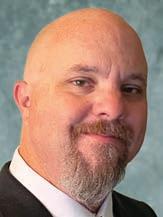
312-361-1685
ddavis@ATMags.com
Digital Media Director
Nathan Frerichs
312-361-1681
nfrerichs@ATMags.com
Production Manager
Mathew Pawlak
Advisory Board
Jan Barlow
Mike Bleier
John-Claude Hallak
Monika Manter
Wesley Nelson
Kyle Nesbit
Fred Schwarzmann
Vic Williams
Wayne Wudyka
Contributing Editors
Dan Miller
Diana Vollmer
Martin Young
Office Information
Main: 312-361-1700
Subscriptions
847-504-8175
ADC@Omeda.com
www.american drycleaner.com
4 American Drycleaner, March 2023 www.americandrycleaner.com
PRE-INSPECTION
Dave Davis
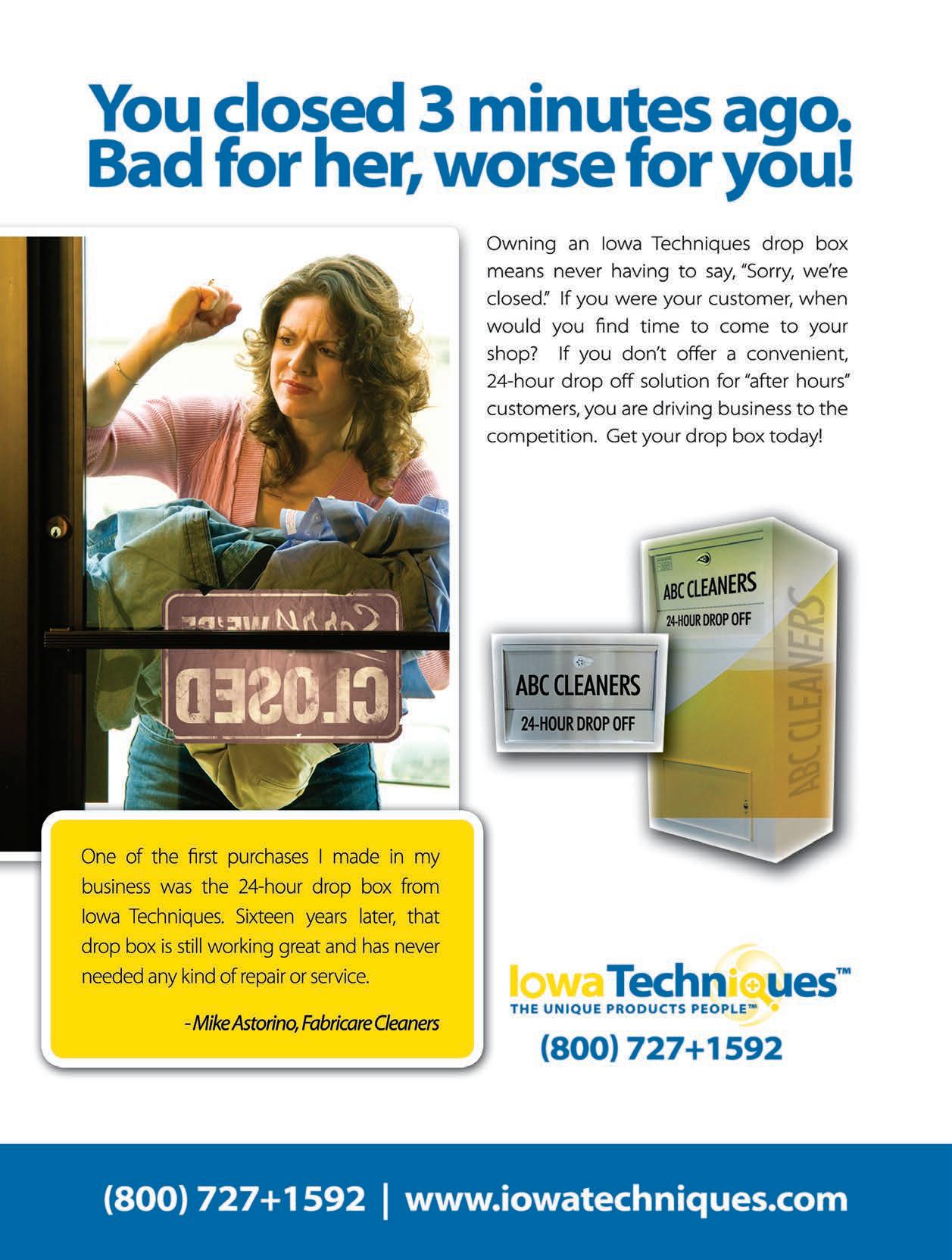
How Do You Measure Success?
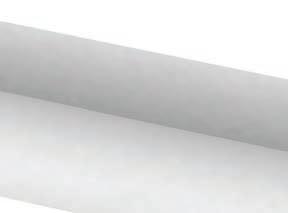
Using KPIs as a GPS for your company’s success



 By Dave Davis, Editor
By Dave Davis, Editor
It’s important for owners of drycleaning companies to have good instincts about both people and business, but the old saying “you can’t manage what you can’t measure” is one successful leaders take to heart.
Measuring their company’s key performance indicators—KPIs—gives an owner or manager a window into how the business is actually doing, rather than relying on their “gut,” or worse, just hoping things are going in the right direction.


“KPIs are a scorecard of measurements that drive the activity of the business,” says Kermit Engh. He owns Fashion Cleaners in Omaha, Nebraska, and is managing partner of Methods for Management (MfM), a consulting firm for the drycleaning industry.
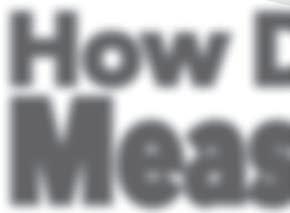



Engh has found, both through personal experience and from working with MfM clients, that getting a true view of a company’s viability is key to future survival.


“Ultimately, success is measured by the profitability
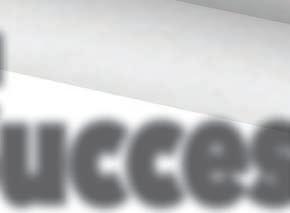






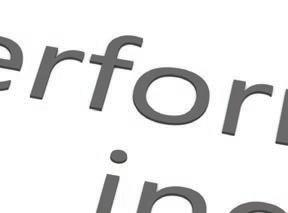
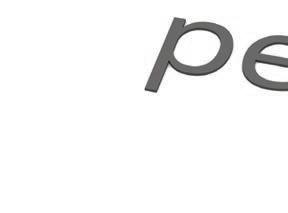

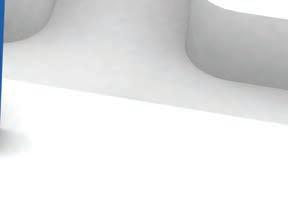


6 American Drycleaner, March 2023 www.americandrycleaner.com
and sustainability of the business,” he says. “If it’s not profitable, it’s not sustainable.”
Diana Vollmer, managing director of the Ascend Consulting Group, agrees with Engh’s assessment.


“By far, the most important KPI in an ongoing business is profitability,” says Vollmer, who also runs the Drycleaning & Laundry Institute (DLI) Management Group. “All the other underlying KPIs are designed to contribute to long-term profit. KPIs are a roadmap to
how to improve your business.”





FACTS AND FIGURES
Part of owners effectively using their company’s KPIs as a GPS for success is determining which ones are most important to their business.
“I find an awful lot of people—and I used to be guilty of this, as well—who are always focused on the top line, or the gross sales number on the P&L (profit and loss) statement. Ultimately, that’s not the most important number on that report. It’s the bottom line,” Engh says.
He says he’s been surprised in the past by owners he’s spoken with who don’t understand what profitability actually means.
“I find it very interesting when I ask them, ‘How do you know if you’re making a profit?’ and they say, ‘I checked my bank account.’ My comment to that always is, ‘Well, I can play that game too by just not paying my bills. But that doesn’t mean that I have a successful business.’”
To better understand the P&L, Engh suggests looking at the company’s EBITAL (Earnings Before Interest, Taxes, Amortization and Leasing) information: “To get to that number, there are a number of KPIs that we look at, such as total labor cost, utility costs, supply costs, marketing costs, overhead (including rents), and executive compensation.”
While P&L is crucial, it’s far from the only KPI that can inform a leader about how his or her business is performing. Modern point-of-sale (POS) systems can provide increasingly granular data on almost every aspect of a business.

“This is an area where the POS systems have really stepped up over recent years,” Engh says. “You’re able to create your own customized dashboard to measure the production and revenue numbers that are important to your business. At a glance, you know how you’re doing. There’s no more digging through numerous reports or begging the POS company to create a report for you.”
Another KPI that Engh finds valuable is pieces per operating hour (PPOH).

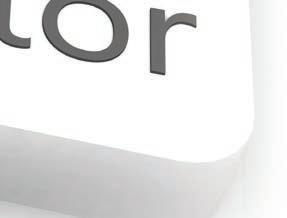
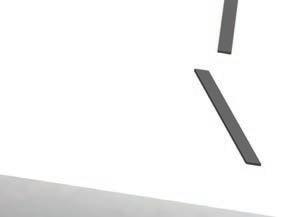
“Most dry cleaners are familiar with this, but I still run into some that don’t measure it,” he says. “It’s easy to calculate by dividing the number of pieces you processed by the total hours that it took you to process them. Many folks then post this number daily to let the staff know how they did the day before. I find that important so that the staff knows if they are on target, and if they had a good day or not.”
Vollmer suggests drycleaning owners also pay attention to other critical KPIs, such as:
www.americandrycleaner.com American Drycleaner, March 2023 7 (ImagelicensedbyIngramImage)
• Sales and/or profit per full-time-equivalent (40hour) employee
• Profitability by department
• Labor percentage to sales (ideally broken down by department)
• Sales per CSR (customer service representative) hour worked
• Sales per stop on route
• Sales per customer
• Average revenue per piece
Because there are a lot of moving parts in a drycleaning business, Vollmer understands that the process of tracking this information can be complicated.
“We’re in a production business, and it’s as complicated a business as there is,” she says. “We combine production, customer service, sales, and marketing. You don’t even get to start with a raw product — you start with a finished product that has to be brought back to like-new condition. In a sense, each production piece is different.”
they stagnant or worse, are they declining?”
By tracking these, Engh believes cleaners are less likely to leave money on the table: “I believe it’s critical that every business collect all legitimate revenue for the work that they do, and these two KPIs are a great indicator if mark-in activities are accurate, and also to determine if you are staffed properly for the hours that are needed.”
While owners can dive as deeply as they wish, Engh suggests taking things one step at a time is paramount.
“Focus on the big numbers first,” he says, “and then slowly get into the smaller numbers that are affecting those big ones if they’re not what you’re looking for.”
PULLING IT ALL TOGETHER
Thanks to advancements in POS technology, Engh points out that gathering the data that will make a difference is simpler now than ever before.
“You can create a dashboard that, when you log on to your POS, gives you a blast of numbers, and you can set up how many of those numbers you want to look at,” he says. “My personal dashboard has about 20 different KPIs and takes me about 30 seconds to scan. My production manager has a different set of KPIs that they look at. But it’s much easier now, instead of having to run a report, find the number, then run another report, find that number, and so on.”
Keeping track of financial KPIs, once the reporting elements are put into place, doesn’t have to take up a lot of a leader’s time, Engh believes.

AVOIDING DATA OVERLOAD
Because it’s easy to get overwhelmed, Engh and Vollmer believe that leaders should have a plan when diving into the data.
“Trying to focus on all the KPIs in the business at the same time just doesn’t work. It really needs to be prioritized,” Vollmer says. “I suggest they take the most important factor that’s going to make the biggest impact on their business and focus on that one.”
As it becomes a part of an owner’s routine, that focus can then be expanded to encompass more data.
“The basics are always the basics,” Engh says. “A couple that I think operators should be focusing on that they may not have in the past are revenue per piece, and CSR revenue per hour. Are these numbers going up, are
“A budget can be set up in a couple of hours,” he says. “You can do this within QuickBooks® incredibly easily. And then generating the report to see how you’re doing—budget versus actual numbers—literally takes seconds. And then to review and adjust those plans may take 30 to 60 minutes a month, depending upon what you’re seeing, and what new initiatives you would like to correct or develop.”
Engh says that other KPIs, such as production numbers, can also be easily gathered.
“For point-of-sale-generated numbers, these dashboards take a bit of work to put together up front. You need to know what it is that you’re looking for,” he says. “But afterwards, it’s virtually no time at all, except for reviewing a number and making adjustments to correct anything that’s not moving in the right direction.”
8 American Drycleaner, March 2023 www.americandrycleaner.com
(Image licensed by Ingram Image)


See us at the Cleaners Showcase April 28th – 30th in Irving, TX, Booth #425
GETTING PERFORMANCE ON THE RISE

When finding a facet of the business that needs to improve, Vollmer believes that getting buy-in from the staff is crucial. Sometimes, that means making sure the lines of communication are open and everyone has a clear picture of what needs to happen.

“Team members tend to think you’re making a lot more money than you’re making,” she says. “That’s why I’m a proponent of ‘open book’ management, because many think that you’re making a fortune. In many cases, the opposite is true; owners are subsidizing their businesses. So, letting them see the reality of what’s going on makes them understand better why the business has to become more efficient.”
Involving employees in the planning phase is a good way to get better effort, Vollmer says.
“Get the people who are responsible for implementing those goals to buy into it,” she says. “For example, when a manager is given a goal, they should be involved in creating that goal, looking at what the status is now, and looking at what goal is realistic with some stretch effort. It’s almost a negotiation of what that goal number should be, but then everybody should be held accountable to it.”
PUTTING NUMBERS INTO ACTION



Tracking KPIs can alert an owner to potential problems as a business evolves, Vollmer says, especially when profitability is tracked correctly.

“Lots of people are experimenting with diverse products and services,” she says, “which I think is smart. But what scares me is when they devote a lot of time and energy to a specific product line without doing the analysis to determine if that line is profitable.”
Vollmer uses the example of the explosion of wash-dryfold services that came about as a reaction to the pandemic.
“Cleaners are replacing a lot of drycleaning and laundry pieces in the plant, but replacing them at a much lower margin,” she says. “Let’s say that the plant used to have four main categories: dry cleaning, laundry, restoration and wash-dry-fold. Maybe wash-dry-fold used to be 10% of the plant’s labor and the building’s overhead. But as the dry cleaning and the laundry shrank, some plants started dedicating as much as half of the plant space to wash-dry-fold.”
The problem, she says, comes in the way wash-dry-
10 American Drycleaner, March 2023 www.americandrycleaner.com
(Continued on page 20)
(Image licensed by Ingram Image)
There’s more: We’re just two members of NIE’s team of experts. NIE has been handling fabricare insurance since 1915!

Buying Out the Competition
 By Dave Davis, Editor
By Dave Davis, Editor
When dry cleaners are looking to expand their market share, their options can be limited — especially in areas where population growth is slow or the market is oversaturated.
Many cleaners, especially in the wake of the pandemic, are finding that their competition, particularly “mom-and-pop” companies, are willing to make a deal and exit the industry.
If the price is right, this can be a winning situation for all involved.


MAKING AN OFFER
For Gary Glover, president of Puritan Cleaners, located in Richmond, Virginia, buying out competition is one of the methods his business has used to grow since its start in the 1930s.

12 American Drycleaner, March 2023 www.americandrycleaner.com
Grow your business by making your rival an offer
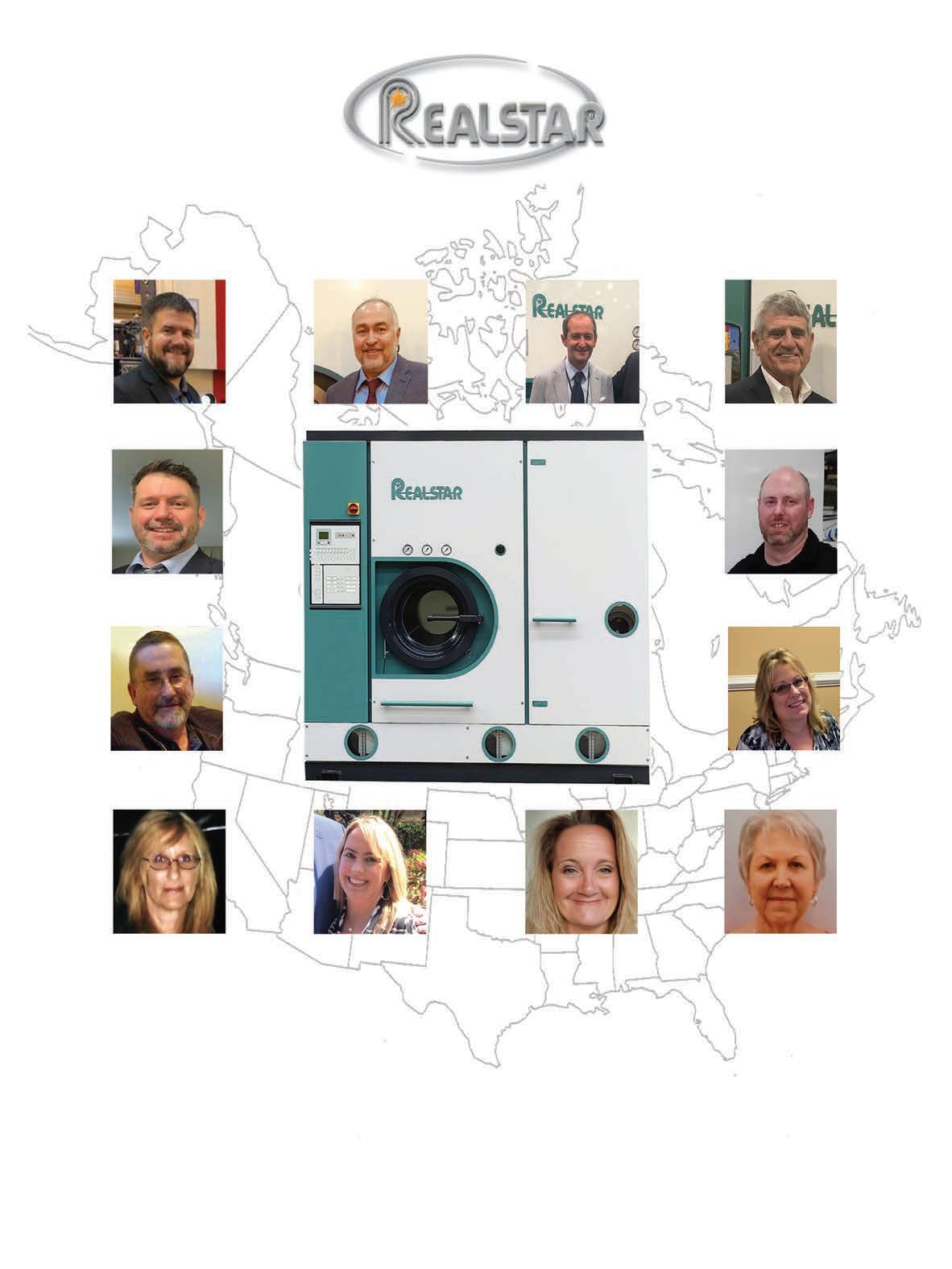

ADC_Full Page.indd 1 2/12/20 8:31 AM See us at the Cleaners Showcase, April 28th – 30th in Irving, TX, Booth #508
“In the last three years, we’ve done a deal with a competitor that brought in two stores and two home delivery routes,” he says. That brought the total for Puritan to 14 stores, three plants and nine home delivery routes.
Glover says the pandemic helped move the deal along.
“They had been coming to us before COVID wanting to get out,” he says. “As COVID came in, they were more anxious to get out and we needed volume, so it was a win-win for both.”
Randy Parnham, CEO of Acme Cleaners in Orlando, Florida, has bought out two competitors in recent years — one in 2017 and the other in 2021. Acme Cleaners now has one plant, three drop stores and two routes.
“In 2017, I approached the owners, because I had heard through the grapevine — mostly suppliers and mechanics — that they were tired and would probably be open to getting out. I looked at the market that I wanted to be in, and I looked at their business. I decided that, if we brought our company in, we would be able to surpass the volume that they were doing. With the 2021 deal, [that competitor] approached me, looking to get out.”
Robert Strong, CEO of Country Club Cleaners in San Ramon, California, acquired his company’s busiest store simply by talking to the landlord of a competitor.
“One of my customers knew the attorney for the previous owner, who had passed away. He called me and said, ‘If you call the landlord, you can take over our lease because we haven’t paid them rent.’ So, I took over the store, and I didn’t have to pay a penny for it to the previous owner.”

Country Club Cleaners is primarily a route pickup and delivery company, with two retail stores and two produc-
tion facilities. While other facilities were available from that company, Strong’s biggest competitor at the time, he decided to only add the one location.
“At the time, they were a seven-store chain, and we knew that was their busiest location,” Strong says. “We could have taken more, but I didn’t want to bite off more than I could chew — which may have been a mistake, and it may have been genius.”
Since the other six stores have closed over the years, however, Strong believes he made the right decision by cherry-picking the store he brought into his fold.
“My thought process was, ‘This is a good deal, it’s in my trading area, and it was profitable from day one,’” he says. “It significantly added to our bottom line. I tell people that’s what put my kids through college — acquiring that store.”
WIDE-RANGING BUSINESS
For Danny Bahlman, president of Bahlman Cleaners in San Angelo, Texas, acquiring the competition is one of the few methods of growth open to him.
“Our area impacts a lot of how we work in West Texas,” he says. “We’re close to a lot of good farmland and close to oil and gas production, but other than that, there are not a lot of people.”
And what people there are in the area are spread out over vast expanses. Bahlman says his local Chamber of Commerce considers its trade area to be nine counties, with a population of around 150,000. The physical area of those nine counties is roughly the size of the state of Maryland.
(Continued on page 19)
14 American Drycleaner, March 2023 www.americandrycleaner.com
(Photo: iStock.com/Plotrekswat)
GROW BABY GROW GET

SMRT
SMRT is dry cleaning software that puts every aspect of your business operations in one easy-to-use interface and automates tasks you’ve always dreamed of simplifying. Time is money - and now you’ll have more of both. How can you be sure SMRT gets your business? Because we are dry cleaners too. Let us show you the way.
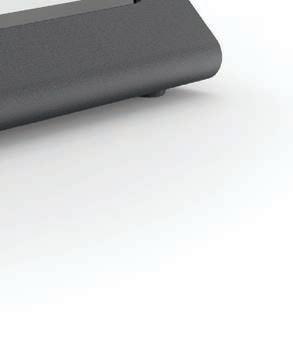
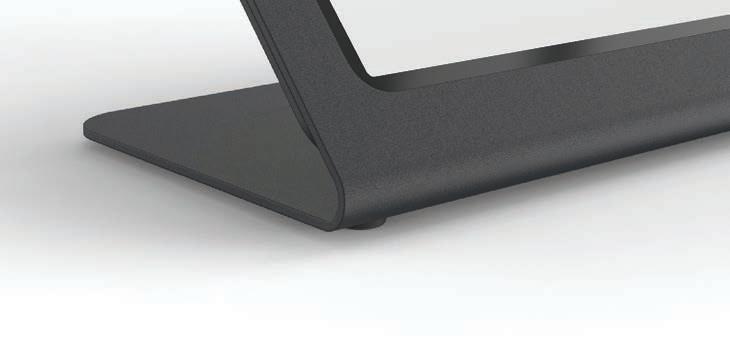
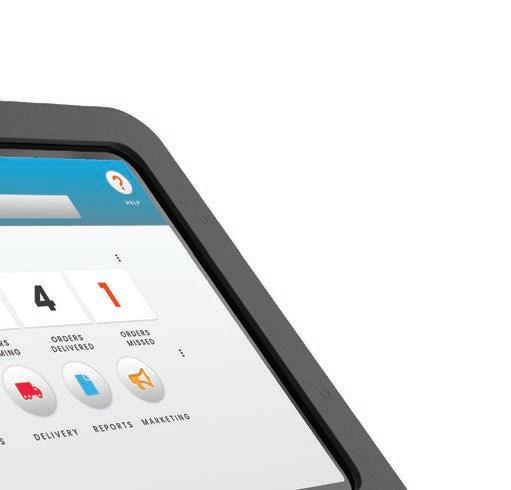
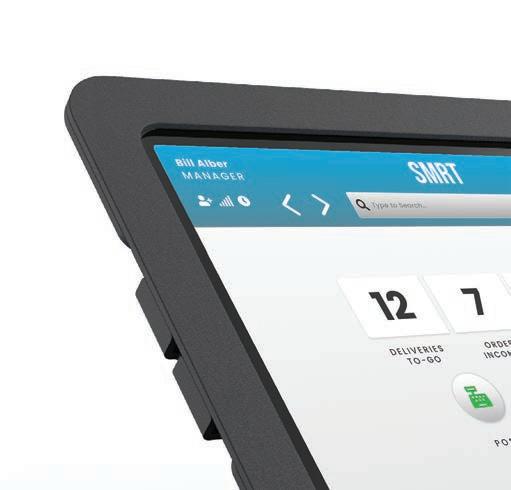
SMRT SYSTEMS | 1017 MAIN CAMPUS DRIVE RALEIGH, NC 27606
“I’M BLOWN AWAY BY SMRT MARKETING. MY JANUARY ROUTES ARE UP 41%, AND MY RETAIL STORES ARE UP 49%. WOW!”
ELTON CERDA, NYC DRY CLEANERS
Your business is your life. Live SMRT.
WHAT ARE YOU DOING TO GROW YOUR BUSINESS?
SMRT Marketing slashes the time and effort required to grow your business. Our automated tools match your customers with the right messaging at the right time, build your digital reputation, and deliver explosive results. Your SMRT System is designed to handle it all. The question is, are you ready?



REVIEWS
OFFERS ORDERS . . WILL WATERSTRAAT, HELENA’S CLEANERS (919) 849-5500 | WWW.SMRTSYSTEMS.COM
“SMRT
MARKETING IS A GRAND SLAM FOR OUR BUSINESS. ”
SMRT MARKETING
SOCIAL MARKETING . .
RIAL S.
“I am very pleased with how the software is performing and the functionality. It has made communication with our customers more robust and streamlined. Issues I have posed to the company have been listened to and actual changes have taken place based on recommendations. have Implemented around 15 different software products on a large scale in my career and would have to say this was one of the best experiences so far.”
MICHAEL B.
“I used a legacy system (the largest in the industry) for 13 years before switching to this “upstart” back in 2017. The difference was immediate, obvious, and impactful for our operation. And that was back when they were an upstart, and the software was still in its relative infancy. They are now one of the dominant players in the market, and for good reason. The absolute best thing about this software, IMO, is the way customer communications are handled. It’s partly an email client, part text interface, and part slack, all tied into one, flawlessly.”
THAYNE A.
“...from the change over to the delivery for my business the SMRT Systems is [by far] the best at teaching employees how to work the system. My customers swear that the texting to let customers no the there Dryclean orders are done is [easily] the best in our industry! So glad we went with SMRT!”
BILL
W.
“The developers are always working to make the system work better. It already works great but if there is something that you would like for it to do you can request it and it will probably get done. I also like that it is so easy to use. New associates can be up to speed in just a few days.”
LAURIE C.
“We have improved garment tracking and communication internally and with customers. We are able to be really transparent. The customer interface is great. The team is great to work with! Our systems and processes are getting streamlined in a way we’ve been dreaming about for years, but had roadblocks with previous software.”

REVIEWS
DENISE T.
“The migration to SMRT was validated and praised by both our multi-generation of employees and customers. The ease of learning, navigating, and customer interaction has elevated our service and won the confidence and respect from all. Reporting and data analysis continues to become even more sophisticated. Unlike many services where support diminishes after the honeymoon stage, the SMRT support team continues to be very responsive with great attitudes long after conversion.”
ALONSO C.
“Our internal company communications, automation with management reporting, billing and customer resolutions have been the biggest benefits with the software implementation. What took several emails, manual phone calls and meetings with our management are now easily reported across all communicaitons channels and have reduced the time to resolve day to day processes.”
JOE F.
“...SMRT allows you to follow real time the daily ins and outs of your business. am able to physically leave my facility and check in remotely. This was a huge step in me being able to devote time with my family, and giving me back control over my business.”
JASON Y.
“My overall experience with SMRT has been fantastic! They are a great partner to have in the industry.”
JONNI M.
“My overall experience with SMRT has been great. The customer support and complete openness to look for and create new functions has made our everyday use easier. The ability to track garments, contact customers, track drivers, and option to make just about any kind of data report we request has been a life saver.”
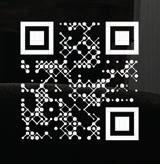
MAJOR B.
“The extra communciation features for my team and our customers. The ease of use. The delivery and route optimization features to help build and organize our growing Pickup and Delivery system. Has incoporated into our marketing efforts beautifully.”
STOP BEING INVISIBLE
(919) 849-5500 | WWW.SMRTSYSTEMS.COM
“It would be the 42nd largest state in terms of area,” he says. “Our growth rate over the last 20 years has been about 9%, so how do you grow when you don’t have population growth? For us, growth in income comes from either raising the prices, getting the business from someone else, or buying the competition.”
Bahlman has made two deals over the past few years to grow his business to its present size of one plant and six stores. One acquisition was from an older couple who were in failing health, and the other as the result of a divorce, with the owner wanting to move out of the area.
“One location was four blocks away from our flagship store,” he says, which caused some surprises along the way. “Some of our customers who lived closer to the new store started going there instead of our flagship. That impact I did not expect. When I looked over (the previous owner’s) customer base, I think there were only three names that I recognized, so I didn’t feel like we were going to lose customers. The traffic pattern was just different.”
MAKING THE TRANSITION
Besides simply having less competition in the area, there are other benefits to buying out a competitor rather than opening a new store,
“You have business right away,” Parnham says. “When you open a new store, you may not get anybody in the door for a few days. When it’s an existing place, you’ve got to be able to go right then and there.”
Parnham believes that the owner, or at least senior staff, should be available in the first days of a newly rebranded company to ease clients’ minds.

“In our industry, people tend to think it’s either a mom-and-pop store or a franchise,” he says. “A lot of people don’t want to deal with franchises, and being there, I was able to say, ‘This isn’t a franchise — I’m the owner. We’ve been family-owned and -operated since 1928. Ultimately, it’s your decision, but I ask if you just give us one shot, I think you’ll be happy with the results.’ And that has led to a lot of success.”
Often, there’s room for improvement when a store changes management, Strong says.
“When we took it over, we improved the service to make sure the clothes were there on time, offered quicker service, cleaned up the storefront and also remodeled,” he says.
It’s important to allow existing customers to get used to a new way of doing business, he says.
“Their prices were lower when we took it over, but we didn’t raise them at first,” Strong says. “With the exception of one or two customers, everyone was on board, and sales increased. Once sales and volume started to increase, then I increased the prices to be that of what I was charging my other Country Club Cleaners customers. That’s when it became very lucrative to own that store.”
Strong also found that there was extra profitability potential at the new location: “(The former owner) was leaving a lot on the table because the business was neglected. I just went in and did the basics.”
LEARNING FROM EXPERIENCE
Doing your homework on a potential buyout is essen(Continued on page 28)
(Continued from page 14) www.americandrycleaner.com American Drycleaner, March 2023 19
(Image licensed by Ingram Image)
(Continued from page 10)
fold is priced—often by the pound, by the bag, or as a subscription service.
“Many dry cleaners are still pricing it the way they did when it took only 10% of the infrastructure cost,” she says. “That’s a red flag, and I would say they need to do a very careful analysis. Their labor and their machines are very busy doing that work, and the profitability is just not there.”
This profitability issue, she says, jumps out immediately if the cleaner is paying close attention to his or her KPIs.
FINDING THE RIGHT YARDSTICK
Numbers and data aren’t very useful if they are viewed in a vacuum. In order to chart a company’s growth—or decline—it’s important to know what to compare them to.
If an owner hasn’t already done so, define a starting point, Engh urges.
“The first step I’d have them do is to look backwards to see how they were doing on each of those KPIs they wish to monitor,” he says. “Put a stake in the ground, so to speak, from which to then move forward.”
Engh believes that getting expert help in interpreting KPI data can be extremely helpful, especially in the beginning.

“I think their first contact should be their CPA,” he says. “They’re familiar with the ‘business’ side of the business. Second, they can ask their banker as to what they like to see for their clients.”
It’s also helpful for owners to look outside the walls of their company, Engh says. With production numbers, for example, many equipment companies can provide an estimate of what PPOH they believe a cleaner should be generating from a piece of machinery. Industry groups have also produced numbers that can be used as a starting mark.
“And then there are peer-to-peer groups, where members share their numbers to assist in creating current real-world numbers,” he says. “It’s amazing how many people can just pick up the phone and call somebody they’ve met at a convention or some other place. They’re normally pretty forthcoming, if they’re not a competitor, as to how they’re doing.”
Vollmer also supports the value of peer groups, not only to gather data but for leaders to find people who are facing the same challenges as they are.
“Joining any organization that exposes you to your peers who are willing to share honestly is always a good start,” she says. “Management is an isolated role. There’s not really anybody within the organization who you can bounce ideas off of without having them question your competence. So, having peers from other companies who are not competing with you to discuss these issues, and to compare results, is incredibly valuable.”
But when comparing with peers, it’s important to view the complete picture, Engh says. Otherwise, it’s easy to misinterpret the data.
“It’s always of interest at our meetings when someone is really successful on a particular KPI. But then you need to really dive a little deeper to see if we’re talking apples to apples or apples to oranges.”
The one company an owner can certainly compare his or her company to is their own. How do current numbers stack up to those generated in the past?
“Ultimately, are you getting better compared to where you were at before?” Engh asks. “Any operator can create their own KPI list by listing those numbers most important to them. Track those numbers on a daily, weekly or monthly basis, and then compare them period to period. And are you getting better in that KPI? Or are you getting worse? In reality, the only results that really matter are if you are getting better or not, not necessarily comparing to someone else.”
20 American Drycleaner, March 2023 www.americandrycleaner.com
(Photo: © tashatuvango/Depositphotos)
PRESS THE CLOTHES AND IMPRESS YOUR CUSTOMERS.









When you welcome American Express® Cards, you have access to benefits, services and programs to help your business thrive, including curated o ers and discounts to help you get more out of your business, and solutions and tips to help attract new customers. Scan the QR code for more information on available resources.




Reimagining Leadership for Future Success



To build a winning team, examine the forces that are changing the workplace
 By Dave Davis, Editor
By Dave Davis, Editor
Because both employee expectations and the nature of business itself are constantly evolving, owners of labor-intensive companies such as drycleaning businesses need to recognize these changes and adapt to the times. Otherwise, they will constantly struggle to fill their labor needs and the atmosphere of their company will suffer.
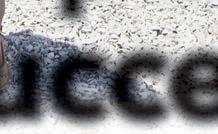

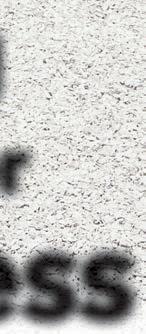









This was the message of Dirk Beveridge during his webinar, “Reimagining Leadership in a Post-Pandemic World,” hosted by the University of Innovative Distribution (UID). The webinar was made available to Textile Care Allied Trades Association (TCATA) members through partnership with UID.
Beveridge is the founder of the strategy firm UnleashWD, and has been a consultant to a wide range of companies to strengthen their sales and leadership strategies.
During the webinar, Beveridge shared some of the findings he has gathered from surveys and from visiting dozens of different companies during the summer months of the past two years, speaking with hundreds of workers and leaders in the process. These findings, he believes, can be applied to almost any industry because the forces at play are universal.
The experience gathered from these tours, Beveridge says, can’t help but give someone a diverse perspective into the reality of the modern workplace.

“I guarantee you if you do that, as I have,” he says, “you will come back a different person after hearing all those stories, and you start thinking about business and leadership differently.”
Beveridge took the information he gathered and started to build a new worldview into the evolution of business.
“As I left those two summer tours, I had two funda-


22 American Drycleaner, March 2023 www.americandrycleaner.com
(Photo: iStock.com/Rob Daly)
mental premises,” he says. “The first premise is that the very nature of leadership is changing more rapidly than most of us realize. The second premise I had is that humanity is going to play a larger role in how we lead in a post-pandemic world.”
THE GREAT REDEFINITION
For many small and mid-sized businesses, such as most drycleaning companies, the ability to find people to work has been a huge obstacle in the aftermath of the pandemic — so much so that there’s a term for this tightening of the labor market: the Great Resignation.
While it’s still a challenge, Beveridge believes that leaders who look more deeply into the issue can find answers.
“I don’t think the Great Resignation is the overall focus of what we, as leaders, need to be talking about,” he says. “It’s a real issue, but I believe that, at a higher level, and even as perhaps a more important issue for leaders, we need to think of this as what I’m calling the Great Redefinition.”
There are three forces that make up this redefinition, Beveridge says, and they are colliding in an unprecedented way. These are the external forces, internal forces and people forces.
“We, as leaders, need to be aware of these forces,” Beveridge says. “How they are impacting our business and how they’re impacting our people, so that we can, in fact, rethink how we lead our organizations going forward.”
EXTERNAL FORCES




“The external forces are the ‘megatrends’ — the global trends that you and I have zero control over,” Beveridge says. “These are the forces that are changing the way we live, the way we work, and the way we play.”
These trends include supply chain issues, inflation, changing labor markets, new technology, social
changes, consolidation in various industries, changing customer expectations and lingering COVID forces.
These external forces are not just acting on one segment or one industry. They go well beyond that. These forces affect the entire national — and global — economy.
“These are the trends that we can have no impact on, but they impact us,” Beveridge says, “because those
external forces move into our markets, they move into our companies. And they generate the internal forces.”
INTERNAL FORCES
The internal forces, Beveridge says, are the ones that leaders must deal with and can at least have some agency over, although that agency could be limited.
“These are the challenges that
The greener way to clean.
• SolutionsforlaundriesandDryCleaners: and innovative laundry machines for commercial use


• The“Green”alternativetodrycleaning:WetCare - The original wet cleaning system developed by Miele

• Economical & Sustainable: Less water, less energy, easy to operate
• SaveMoneyandTime: Fast wash & drying cycle times increase productivity
• PatentedHoneycomb® Drum(onWasher & Dryer): Cleans textiles with extra care, and extends fabric life expectancy

• ExcellentSpinPerformance: Very low residual moisture on account of high g-force




• Technology & Innovation: Always the right machine for efficient laundry care
• FreelyProgrammable: Up to 200 fully easy-to-use custom programs
www.americandrycleaner.com American Drycleaner, March 2023 23
To learn more about Miele’s full line of WetCare laundry solutions visit mieleusa.com/professional. Quick, efficient, durable,
you and I have in terms of attracting talent,” he says. “The challenges we have in retaining team members, and the succession that has taken place in our organizations. This includes the blending of generations in our businesses, the shifting needs and wants of employees and customers, margin pressures, and so on.”
And, while all these subjects need to be addressed to ensure the continued health of the owner’s company, leaders who ignore the third facet of the Great Redefinition, what Beveridge calls the people forces, will be facing an uphill battle.
PEOPLE FORCES
“I really believe that for years, we’ve talked about the disruption that our companies are facing,” Beveridge says. “But in reality, when you look at the last two and a half years, through COVID, and coming out of COVID, I believe that we as human beings, have been disrupted. Your employees, your team members, your peers — the individual has been disrupted. And, I believe, at a greater degree than even our companies have been disrupted.”
Part of this disruption comes from elements such as working with an increasingly diverse labor market and dealing with new business models, such as hybrid workforces.
These “people forces” include increased social pressures that have taken on new weight over the past few years.
“There’s the polarization of social and political views,” Beveridge says. “Three, four or five years ago, we didn’t have any problem talking about social or political issues in our organizations. But now, have any of you lost or almost lost a family member or a friend because over the water cooler or at a barbecue, you started talking, and then, all of a sudden, you started clashing? I’m not proud of it, but I have.”
Other elements of the people forces include the human toll of COVID, a shifting definition of work, and more desire for a better work/life balance.
“Everything is being redefined,” Beveridge believes, saying that changes are constantly coming, thanks in part to new technology, changing customer behaviors, the needs of employees, shifting marketing options, and other workplace realities.
Owners who play by a decades-old playbook in personnel management, Beveridge says, are setting themselves and their teams up for failure.
“It only makes sense,” he says, “that, if everything around us has been redefined, we need to reimagine leadership.”
LEADERSHIP’S INFLECTION POINT

“There are fewer people who want to work the way society has structured work,” Beveridge says, based on
his research and interviews. “If that’s not a call to action for you and I to rethink how we lead our teams and organizations — to lead ourselves — going forward, I don’t know what is.”
Leadership, he believes, is at an inflection point.
Based on his research, interviews and personal experience, Beveridge offers the four evolutions of leadership: controlling, managing, leading, and noble calling.
Controlling — “Controlling leadership was the way people like me were taught to lead years ago,” he says. “You lead through legislation, through policing and through fear.” Beveridge believes that this is the most outdated and the least effective way to lead today’s employees — a prime example of yesterday’s playbook.
Managing — “Thank goodness ‘controlling’ evolved to ‘managing,’” Beveridge says. “This is where I have my to-do list as a manager. I’ve got processes in place, and we’ve got things working. We’re taking orders, we’re shipping those orders, and we’re billing and collecting for them. So, let’s just manage the status quo. Let’s get the day-to-day work done. Let’s administer what needs to be administrated, and let’s stick to what we know is working.”
Leading — “‘Managing’ then evolved into ‘leading,’” Beveridge says. “For the last two decades or so, we’ve been talking about leadership — really needing to have a vision for the organization and where we’re going to go. The world is changing around us, so just administering the day-to-day isn’t good enough. We’ve got to think about the change that’s going to be required, and the innovation that’s going to be required. We need a new vision for our department, and for my function in my company. Then, we need to develop strategies and create the cultures that are required.”

24 American Drycleaner, March 2023 www.americandrycleaner.com
(Photo: © vaeenma/Depositphotos)
Nobel Calling — The evolution from “leading” to the next level is something Beveridge says he’s found most often in independent, family-owned businesses and employee-owned companies.
“I’ve identified this fourth pillar as the ‘noble calling,’” he says. “This is where, as leaders, we need to ensure a deeper meaning and a deeper purpose. Our teammates, the people who are working with us, want to know that they’re making a difference — that they’re contributing to the greater good. What’s the purpose behind what we’re doing here? What’s the impact? People don’t want to just be a cog in a wheel. They want to make an impact, that their contributions add to something greater.”
If properly understood and utilized, this facet of desire can improve both the lives of employees and the future of the company, Beveridge believes: “As leaders, you’ve got a platform to unleash what I call the human spirit of these individuals to help them fulfill their potential. It’s exciting!”
THE EVOLUTION OF LEADERSHIP
“Look at that spectrum of leadership,” Beveridge says. “Controlling, when leaders put the company first to produce, produce, produce. If I wear you out, if I burn you out, I can just go get somebody else. You’re a number. I’ll just put another cog in the wheel. That’s how busi-
nesses did it in the past. That’s evolved to where people come first.”
Beveridge recounted a meeting in the field with an employee who told him that coming to her current place of employment was “the greatest decision in my life.”
That statement made an impression on Beveridge, and when he asked her about it, he found that it was based on her employment history.
“She told me the story about her previous employer,” he says. “The way they treated her with a lack of dignity, and a lack of respect, leading through fear through intimidation, and using her as a vehicle. She finally got the courage to leave there, she found (her current employer), where the team members are treated with dignity, respect and empathy.”
Leaders who want to not only increase their company’s production and profits, but also want to have employees who remain loyal and stay longer, need to understand this essential change from yesterday’s worker to today’s team member.
This, Beveridge says, requires leaders to take a good look at their company and what they are trying to achieve.
“Vision is defined as a future reality that you really believe is possible with committed effort,” he says. “It falls to us, as leaders, to think hard about that vision.”
Our heating surface or amount of steel absorbing energy has always been 2 to 3 times that of other units (up to 6 sf of heating surface per boiler horsepower, which some units are closer to 2 sf of steel per hp, and some even 1 sf).

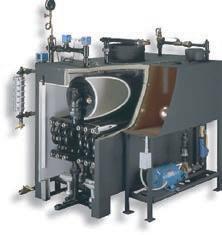
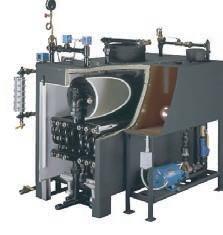

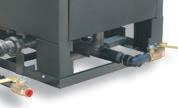
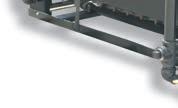
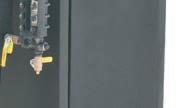



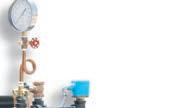

www.americandrycleaner.com American Drycleaner, March 2023 25 Wemayneverbethe lowest initial cost, but wehavelowestcostofownershipbecause:
have proven to last up to 10 times longer than similar production in this industry and applications.
have many installations with steam boilers that have
service for over 50-years, 10 hours per day.
5930 Bandini Blvd. Los Angeles, CA 90040 Tel: 323-727-9800 www.parkerboiler.com NEVERA COMPROMISE FOR QUALITY OR SAFETY
Products
We
been in
Help Available for Owners Putting New Business Plans into Play
SCORE offering business plan templates, mentor review

WASHINGTON — Owning and operating a successful small business is challenging in the best of times, but entrepreneurs who have business plans are twice as likely to obtain capital and are more likely to grow, according to the Service Corps of Retired Executives (SCORE).
As a banker and regional credit manager, SCORE mentor Laura Rogers notes that in today’s macroeconomic environment, small businesses need to be thinking ahead.
“Interest rates are increasing and may continue to do so,” she says. “Small businesses must account for that in their budgeting, and make sure they understand consumer spending habits, how they can change and how that can impact your business.”
To aid small-business owners in creating their plans, SCORE is offering several business planning templates that include easy-to-follow instructions to consider the many aspects of running a business, anticipate challenges and develop strategies to succeed. Once complete, SCORE mentors are also available to review plans, offer feedback and provide expert advice.
entrepreneur and SCORE mentor with a decade of experience successfully launching his own ventures.
His advice: “Don’t wait. Take that first step, talk to the clients, start servicing them and figure out the requirements. Then it is a matter of following a business plan to guide your growth.”
U.S. Chamber Calls on Lawmakers to Reject Gridlock

Chamber president outlines an ‘Agenda for American Strength’
WASHINGTON — In the annual State of American Business address, U.S. Chamber of Commerce President and CEO Suzanne P. Clark urged government to reject partisan gridlock, pursue an actionable agenda to strengthen America, and give businesses the best opportunity to succeed.
These services are provided at no charge.
“Unfortunately, 20% of small businesses fail in their first year and 50% fail within the first five years,” says SCORE CEO Bridget Weston. “When small-business owners think through key issues and work with a mentor, they are more likely to avoid common pitfalls and are three times more likely to stay in business.”
While developing a business plan can seem overwhelming, the key is to just get started, says Kewaan Dayton, an
“Business demands better from our government because when it comes to Washington, the state of American business is fed up,” Clark says. “The polarization, gridlock, regulatory overreach, and inability to act smartly and strategically for our future is making it harder for all of us to do our jobs and move this country forward.”
Clark says that business owners and workers need more from their government than what they have been getting.
“We need a government that works,” she says. “A government that rejects gridlock and chooses governing. A government that can partner with the private sector on our biggest challenges and can engage globally to advance America’s interests, and the world’s. A government that limits itself to the work only it can do — no more and no less.”
AGENDA FOR AMERICAN STRENGTH
During her address, Clark outlined an agenda to
26 American Drycleaner, March 2023 www.americandrycleaner.com AROUND THE INDUSTRY
strengthen our country in five key areas: building, people, energy, global leadership, and the rule of law. She stressed that progress can be made on national priorities immediately through practical, actionable steps, and highlighted the following key actions that Congress and the Administration should pursue this year:
•Pass a permitting reform bill to deliver on the investment made in infrastructure;
•Secure our nation’s border, protect Dreamers, and increase the number of employment-based visas;
•Fix worker shortages by improving access to childcare and incentivizing work;
•Accelerate permitting for new American energy exploration and production, finalize a legally required 5-year program for offshore leasing, and make it easier to build energy infrastructure;
•Work in partnership with the private sector to achieve climate resilience through innovation;
•Resume free and fair-trade negotiations and pursue
new deals;
•Tackle head-on the challenges with China, while maximizing the benefits America can and must derive from continuing to do business with the world’s second-largest economy in areas consistent with our national security and values;
•End lawsuit abuse by going after litigation funders; and
•Enact policy changes to help law enforcement and prosecutors make our communities safe and fight organized retail crime.
Clark added that it’s also important for lawmakers to stop instituting a government-knows-best approach that burdens American businesses with overregulation and micromanages our economy.
This agenda, Clark says, will “help us not only navigate the present moment but also steer our country to the brighter, stronger future that we expect — and future generations deserve.”
For Contactless Automation at the Front Counter, Plant and Routes
•Presses and Solutions for all Budgets
•Best and Free Technical Support Forever
•Proudly Made in the USA
•We are the Only Manufacturer of TÜV SÜD Safety Certified Presses; Includes OSHA and UL Safety Standards

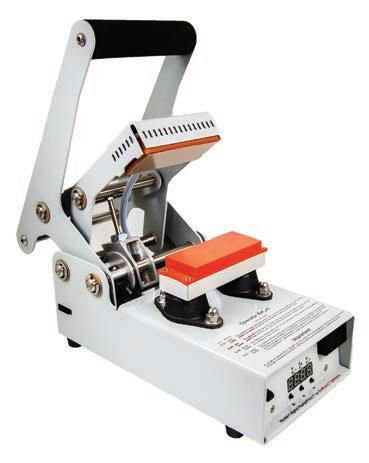


•Low Cost of Ownership – Very Reliable, Easy to Fix and Upgradeable
•Pre-printed Sequentially Numbered Heat Seal Barcode Labels in One Day
www.americandrycleaner.com American Drycleaner, March 2023 27
Toll Free 877.906.1818 www.ezpi.us A Proven Industry Leader & Recommended by the Consultants You Trust. The Ultimate Heat Seal Machine Saves You Money, Time and Labor
tial in finding the right deal, Strong believes.
“Whether you’re buying a car wash or a laundromat or a dry cleaner or liquor store, you want to know what the revenue is,” he says. “Can they confirm their revenue? Can they confirm their costs?”
“I like to look at their income and expense report over a minimum of the last two years, and the last five if you can get it,” Bahlman says. “Trust a little, but verify everything.”

In addition to the financials, there are other areas to investigate.
“See what kind of lease commitment you are buying,” Glover says. “See what the obligations to ground contamination and those types of issues are. If you’re just buying a customer base, it’s a little more straightforward. You’re going to convert customers into a different location.”


Bahlman says that new owners not only have to look at the present, but to the future as well: “If you’re leasing, make sure you get it tied up. Shopping centers are not renewing leases. The last thing you want is to buy something and have to move in two years.”
Keeping the existing customers of the acquired business happy needs to be part of the game plan, as well. Parnham believes that the outgoing owner can be instrumental in making this happen.
“Make it a smooth transition for yourself, where the seller doesn’t just disappear,” he says. “The first time I bought a business, the seller said, ‘Once I sign the papers, I’m out. You already know how to do dry cleaning.’ I figured it was no problem — ‘I got this’ — but it was a shock to the customers who had been going there for years.”

Parnham remembered this lesson for his next acquisition.
“The second time I did it, it was much easier for the seller to be there and say, ‘Hey, we loved being here. We’ll miss you guys, but you’ll be very happy with Acme coming in.’ She did a lot of the selling for us, telling them that we were family-owned and -operated, and that everything was going to be OK.”
Bahlman cautions cleaners buying competitors that their bottom line might suffer a bit in the early going but urges them to stick with it.
“Depending on the parameters of an acquisition, you should expect some loss of business (piece counts) for a short period of time until you establish yourself with the customer base,” he says. “We always feel like the customers are our best form of advertising and promotion. This is probably more prevalent if the stores are rebranded to a new name that might be unfamiliar to the clientele.”
That being said, Bahlman notes that there is a case where the new owner might be in for a pleasant surprise.
Trio: Training and Promotion, Poly Bag Laws and Preventative Maintenance














Hot-Topic

Training and Promotion
Mark Scott came up through the ranks to become the owner of Bakker’s Fine Drycleaning in Kirkland, Washington. Here, he provides owners with tips on identifying team members who are ready for more responsibility.

SPECIAL REPORT: LA Cleaners, Associations Fight Proposed Poly Bag Ban
Industry trade organizations quickly rallied to make sure the drycleaner’s voice was heard during a discussion about a potential ban on poly bags.
Preventative Maintenance for the Win!
Jerry Moore of Moore Services highlights the benefits of performing regular preventative maintenance on your equipment — and warns of the risks of neglecting this important task.
Every FREE episode...


offers engaging, industry-specific conversation with an expert, including business-building tips you won’t find anywhere else. And you can listen anytime, either online or download for later!

Give us a try!

(Continued from page 19) 28 American Drycleaner, March 2023 www.americandrycleaner.com Listen in at: americandrycleaner.com/podcasts
0223adc_ADC Podcast_Hhalf.indd 1 1/13/23 2:17 PM
“The reverse of this is possible,” he says, “if the rebranding would be perceived as an improvement from the previous owner’s lack of updating and services offered.”
REPEAT PERFORMANCE
So, ultimately, is buying out the competition a sound business plan for dry cleaners? Glover believes so, as long as it’s part of your overall strategy.
“In this climate, there are dry cleaners in our market that are available,” Glover says. “Some have low volume, or they don’t represent a great location, so we won’t look at them. There are few shining stars out there that, when they’re ready or when it’s the right time, we’ll approach them and see what their temperature is. We’ve got one that we’re looking at right now where we haven’t really started negotiating, but we’ve made the initial contacts and both parties are interested.”
Bahlman says after 57 years in the industry, the right deal would have to come along for him to consider it.
“The next closest place to us to buy anything is 100 miles away,” he says. “At my age, I would have to think long and hard about it. If they have good, strong management, though, I could see me doing it again.”
For Strong, 85% of his retail volume comes from route work, and even though he hasn’t made any other buyouts

since the pandemic — “We’ve kissed a lot of frogs, but none of them has turned into princesses” — he has his eyes open for more deals.
“I’m really swimming the waters, looking to acquire a pickup and delivery business,” he says, “and I’m looking aggressively because of the pandemic money from SBA loans and other sources. I do have a war chest to make a purchase.”
While Parnham is also willing to make another buy, the price has to be right for the deal to make sense.
“I’m not going to go out and give somebody their retirement for nothing, which is, unfortunately, what most dry cleaners want,” he says. “I’ve had lots of people approach me over the years, and most people don’t know how to value their business. They haven’t planned for retirement, which hinders them in the selling process because they’re thinking, ‘Hey, I need this lump sum of money to be able to be done’ — and that’s not how it works.”
Still, done correctly, making an offer to buy out a competitor is something every dry cleaner should at least consider, if at all possible, Glover says.
“It’s an easy way to grow if the right opportunity’s there — if it’s in your wheelhouse, and if it’s something that fits your core product. I wouldn’t hesitate to do that again.”
www.americandrycleaner.com American Drycleaner, March 2023 29
2023 RATES: One- to five-time rate: $2.35 per word, boldface $2.40 per word. Minimum charge: $50.00 per ad. Call or write for our threeand 11-time rates. If box number is



used, add cost of 5 words. Display classified rates are available on request. All major credit cards are accepted.







DEADLINE: Ads must be received by


the 1st of the preceding month. For example, for a August ad, the closing date is July 1st.



PAYMENT FOR CLASSIFIED ADS: Must accompany order.

30 American Drycleaner, March 2023 www.americandrycleaner.com
Paying too much for spotters? Buy 3 Get 1 Free! Buy online and save. DryCleanerSoap.com DIFFICULT TIME SALE! $1,000.00 > > > $850.00/Refurbished, $2,000.00 > > > $1,750.00/New System Includes Computer, Touch Monitor, Invoice Printer. All Name Brands & One Year Warranty! www.westerndccomputer.com 773-878-0150, westernk@msn.com Patriot Business Advisors Specializing in Selling Drycleaners in NJ, PA, DE & MD. Sell or Buy Drycleaners. WE HAVE BUYERS!!! Call Liliane at 267-391-7642 CARTS, TRUCKS & BASKETS CHEMICALS COMPUTER SYSTEMS PLANTS FOR SALE TO PLACE YOUR AD CONTACT: classifieds@atmags.com “I sold my dry cleaning plant on american drycleaner.com” PLANTS FOR SALE Million $ Bizs for SALE • East Ohio River Valley Plant & PUs with Coin-ops • Maine Mid-Coastal w-PU DC- Shirts-Coinop-Linen We Build Wealth! for our Buyers & Sellers • Pre-Approved SBA Loans • Year (max) Seller Training • E & A Transition Coaching • E & A Long-Term Coaching Richard Ehrenreich, CED, SBA, F-CBI Ehrenreich & Associates, LLC 301-924-9247 Richard@Ehrenassoc.com www. americandrycleaner .com SUNBELT LOCATION • fast growing area • sales $6.2 million • cashflow $682,342 • purchase price $5.6 million contact: ewood77579@cox.net PLANTS FOR SALE
2022 RATES: One- to five-time rate: $2.20 per word, boldface $2.30 per word. Minimum charge: $25.00 per ad. Call or write for our threeand 11-time rates. If box number is used, add cost of 5 words. Display classified rates are available on request. All major credit cards are accepted.









DEADLINE: Ads must be received by the 1st of the preceding month. For example, for a June ad, the closing date is May 1st.








PAYMENT FOR CLASSIFIED ADS: Must accompany order.












www.americandrycleaner.com American Drycleaner, March 2023 31
Poly Made for: Sankosha Metalprogetti Unipress Save 30% on Poly! Heat Seal Poly Reliable & Affordable Reduce Waste - Cut out the Middle Man - Build Profit Any Size or Gauge, Clear or Branded 10 Roll SPECIAL - 32 Roll Pallet Discount - 56 Roll Best Value 800-568-7768 CLEANERSUPPLY.COM WE SHIP FAST American Dry Cleaner.indd 3 8/25/20 1:12 PM A.L. Wilson Chemical Co. . . . . . . . . .1 American Express . . . . . . . . . . . . . . .21 Cleaner Business Systems . . . . . . . . . .3 Cleaner’s Supply . . . . . . . . . . . . . . . .31 EzProducts International . . . . . . . . . .27 Garment Management Systems. . . IBC Iowa Techniques . . . . . . . . . . . . . . . . .5 Luetzow Industries. . . . . . . . . . . . . . .31 Miele . . . . . . . . . . . . . . . . . . . . . . . . .23 Newhouse Specialty Co. . . . . . . . . . .31 NIE Insurance . . . . . . . . . . . . . . . . . .11 North American Bancard. . . . . . . . . .29 Parker Boiler Co.. . . . . . . . . . . . . . . .25 Patriot Business Advisors . . . . . . . . .30 Realstar . . . . . . . . . . . . . . . . . . . . . . .13 Royal Basket Trucks . . . . . . . . . . . . 30 Sankosha USA. . . . . . . . . . . . . . . . .BC SMRT Systems . . . . . . . . . . . . . .15-18 SPOT Business Systems . . . . . . . . IFC Union Drycleaning Products . . . . . . . .9 WIRE The latest news, straight to your inbox, 2X a week THE www.AmericanDrycleaner.com 000+ Annual Visitors Advertise Today Contact Don Feinstein • 312-361-1682 SUPPLIES SUPPLIES SUPPLIES ARROW LEATHERCARE SERVICES Finest uality cleaning re nishing & repairs Leather, suede, fur, U s & handbags • F EE ET SHIPPI G in S • F M E I F M TI : www.arrowleathercare.com E mail: bruce arro care com Call 800.54 ARROW (27769) repaid hipping rogram SUEDE & LEATHER SERVICE TO PLACE YOUR AD CONTACT: classifieds@atmags.com OR CALL DON FEINSTEIN 312-361-1682
Economic Outlooks, Breaks and Cleaning Up
10


YEARS AGO. Economic Outlook
As they headed into 2013, consumer confidence showed a slight increase in January, but consumers remained largely pessimistic about the economy, according to the Survey of Consumers, conducted by Thomson Reuters and the University of Michigan. Experts expected to see a slight increase in spending. “While consumer spending will slow in 2013, spending by higherincome households…will keep consumer spending slowly expanding,” said Richard Curtin, the survey’s chief economist.

25 YEARS AGO. Taking a Clean Break — Clean Break was a special amnesty program that was put together in Illinois by the governor and state EPA, offering businesses “amnesty” for any past environmental violations in exchange for compliance plans. According to the Illinois Fabricare Association, although the program was open to all businesses with fewer than 200 employees, more than 300 of the 425 companies that signed up for the program in 1997 were dry cleaners.
50 YEARS AGO. Kids Cleaning Up?
— Grubby jeans, dirty sneakers and long masses of tangled hair were losing their grip on students in all parts of the United States in 1973, according to a feature article in the Chicago Daily News. “It’s not so
much that a concerted clean-up is on, but that a dirty-up is off,” the article pointed out. “Overall, this year’s college students have quit working so hard at not looking respectable. Consequently, the ranks of the ‘washed ones’ are growing.” Students on college campuses, the article went on to say, “seem to be concerned with how they’re going to find good jobs in a highly competitive market.”
75 YEARS AGO. The People have Spoken — According to an opinion survey of customers conducted by
the Retail Dry Cleaners Institute of Indianapolis, 53% said “bad cleaning” annoyed them most, with “bad pressing” coming in second with 37% and “belts lost” rounding third with 30%. When asked how they selected their cleaner, “convenience” led the pact with 51%, with “recommended by a friend” coming in second at 21% and “by looking in the phone book” following with 12%. And, when asked “Is dry cleaning a luxury or necessity?” 100% reported that it was a necessity.
— Compiled by Dave Davis, Editor

32 American Drycleaner, March 2023 www.americandrycleaner.com WRINKLE IN TIME








































































Our Automation Systems will help you do more - with less! Are you short-handed? ReliableAffordableAvailable Simple design along with great customer service. Keep it simple! Provides the best return on investment. Made in the USA. Delivery available in as little as 2 weeks. 501-420-1682 garmentmanagement.com 247 EXPRESS Dry Clean at Your Convenience VisitusatSDABooth127



Whether you purchase a piece of our new or used equipment, you become a part of the Sankosha Family. And you get the highest standard of service plus Peace of Mind SPRING INTO MARCH Sankosha USA Inc. TOLL FREE: (888) 427-9120 • TEL: (847) 427-9120 www.sankosha-inc.com Booth #415 See Us at












































 By Dave Davis, Editor
By Dave Davis, Editor










































 By Dave Davis, Editor
By Dave Davis, Editor


































 By Dave Davis, Editor
By Dave Davis, Editor































































































































































